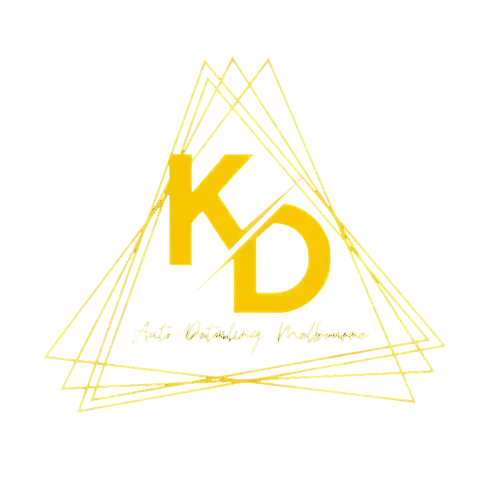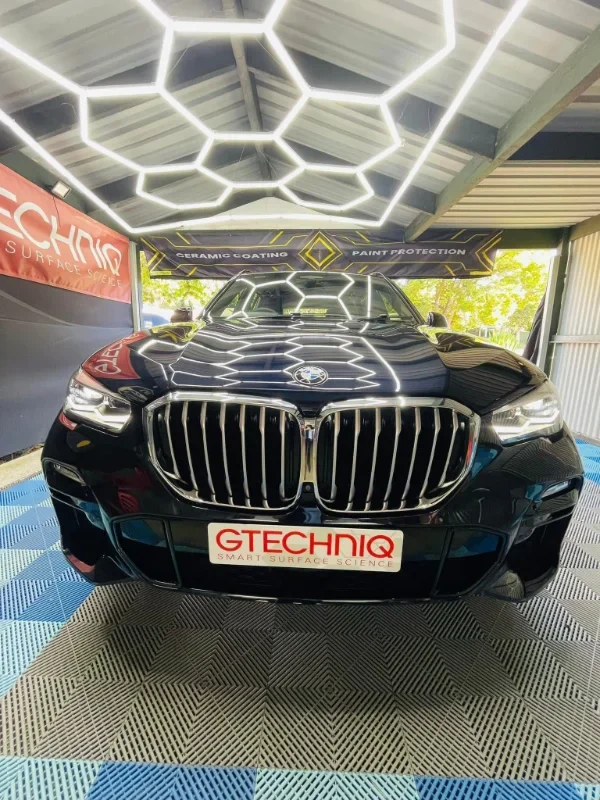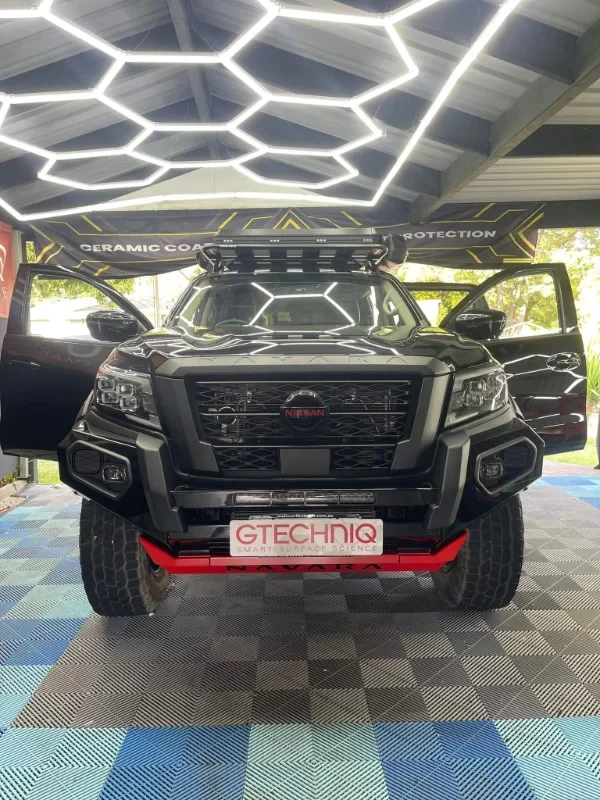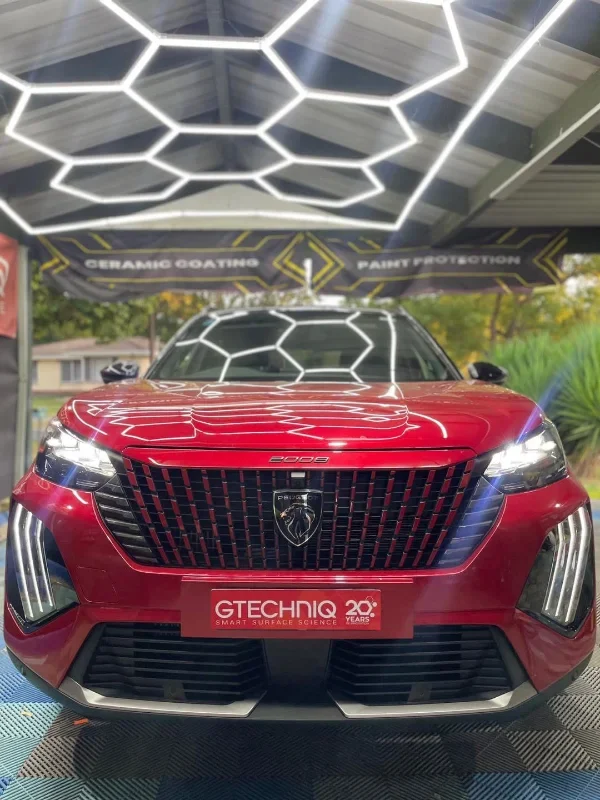Vehicle interiors constantly battle against harmful ultraviolet radiation that slowly degrades materials, fades colors, and compromises functionality. Understanding window tinting’s protective mechanisms helps drivers make informed decisions about preserving their automotive investments through scientifically proven UV protection methods.
Window tinting creates an invisible shield against damaging solar radiation while maintaining interior aesthetics and functionality. The technology behind modern films offers comprehensive protection that extends far beyond basic tinting applications.
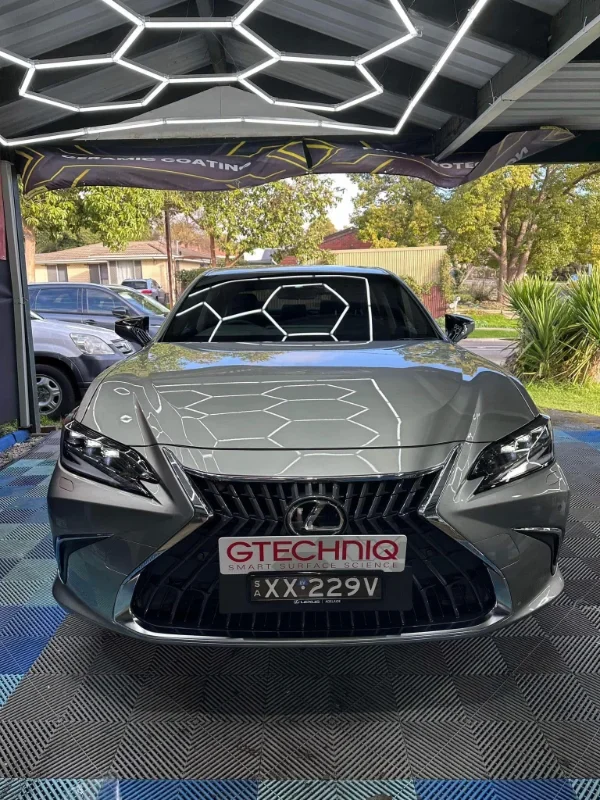
Understanding Ultraviolet Radiation and Interior Damage
Ultraviolet radiation represents invisible energy that penetrates standard automotive glass and damages interior materials through continuous photodegradation processes. This radiation breaks down chemical bonds in various components, causing irreversible deterioration.
Different Types of UV Rays
The sun emits three distinct ultraviolet wavelengths that affect vehicle interiors differently. UVA rays comprise 95% of UV radiation reaching Earth and penetrate deeply into materials, causing long-term structural damage. UVB rays carry higher energy levels and primarily affect surface materials, leading to rapid color changes and surface deterioration.
UV Penetration Through Standard Glass
Standard automotive glass provides limited protection against harmful radiation. Regular vehicle windows block approximately 97% of UVB radiation but allow roughly 80% of damaging UVA rays to pass through. This partial filtration proves insufficient for preventing significant interior damage during extended sun exposure.
Most Vulnerable Vehicle Interior Materials
Different interior components respond uniquely to UV exposure, with some materials showing visible damage within months while others deteriorate gradually over extended periods.
Dashboard and Plastic Components
Dashboard materials contain various plastics and polymers that are extremely susceptible to UV degradation. These components often display the first visible signs of damage through fading, discoloration, and eventual surface cracking. Dark-colored surfaces absorb more solar energy and experience accelerated deterioration rates.
Fabric Upholstery and Carpeting
Fabric materials contain dyes and synthetic fibers that fade rapidly under direct UV exposure. Seat covers, door panels, and floor carpeting can show noticeable color changes within just three to six months of regular sun exposure. Natural fiber materials prove especially vulnerable to UV-induced degradation.
Leather Seats and Trim
Leather represents premium interior material requiring specific environmental conditions to maintain appearance and flexibility. UV radiation causes leather to lose essential natural oils, resulting in stiffness, surface cracking, and permanent discoloration that cannot be reversed through conditioning treatments.
How Window Tinting Blocks Harmful Rays
Modern window films employ advanced technologies to create effective barriers against solar radiation while maintaining necessary visibility for safe driving operations.
UV Absorption Technology
Window films incorporate specialized UV-absorbing compounds that capture harmful radiation and convert it into harmless heat energy. Quality films can block up to 99% of UV rays while maintaining excellent optical clarity for driver visibility and safety.
Heat Rejection Mechanisms
Advanced films utilize reflective technologies to deflect infrared radiation that causes interior heating. This heat rejection capability reduces interior temperatures by 15-20 degrees, creating more stable environmental conditions for sensitive materials and slowing chemical degradation processes.
Three Primary Window Tinting Film Types
The window tinting industry offers three main film technologies, each providing distinct characteristics and protection levels for various applications and preferences.
Advanced Ceramic Film Technology
Ceramic films utilize nano-ceramic particles to provide superior heat rejection and UV protection without interfering with electronic devices. These films maintain excellent optical clarity and consistent performance characteristics over extended periods without fading or discoloration issues.
Carbon Film Performance Features
Carbon films incorporate carbon particles that provide effective heat rejection and UV protection while maintaining a non-reflective appearance. These films offer better performance than dyed alternatives while remaining more economical than premium ceramic options, providing reliable long-term protection.
Traditional Dyed Film Options
Dyed films use color-stable dyes to absorb solar energy and provide basic UV protection for interior components. While these films offer adequate initial protection, they may experience some fading over time and provide more limited heat rejection compared to ceramic or carbon alternatives.
Selecting Appropriate Tint Darkness Levels
Choosing proper tint levels requires understanding measurement standards and legal requirements while balancing protection needs with visibility and regulatory compliance.
Understanding VLT Percentage Ratings
Visible Light Transmission (VLT) measures the percentage of visible light passing through window film materials. Lower VLT numbers indicate darker tint that reduce visibility, while higher numbers represent lighter films. UV protection effectiveness depends more on film quality than darkness levels.
Legal Requirements and Regulations
Each jurisdiction maintains specific regulations governing window tint darkness, particularly for front windows and windshields that affect driver visibility. These laws typically specify minimum VLT requirements to ensure safety standards while allowing some customization options.
Temperature Reduction and Climate Control
Window tinting provides significant heat reduction that contributes directly to interior preservation by creating more stable environmental conditions throughout daily temperature fluctuations.
Interior Heat Management Benefits
Quality window films create thermal barriers that stabilize interior temperatures and reduce extreme heat buildup during sunny conditions. Professional window tinting Adelaide services like KD Auto Detailing install films that maintain consistent interior climates for optimal material preservation.
Material Preservation Through Cooling
Lower interior temperatures slow chemical reactions that cause material breakdown and extend the functional lifespan of interior components. Reduced heat exposure minimizes thermal expansion and contraction cycles that contribute to cracking in plastic and leather surfaces.
Signs of Sun Damage Prevention
Window tinting effectively prevents various forms of UV-induced damage that commonly affect unprotected vehicle interiors over time.
Fading and Discoloration Protection
Quality window films prevent the photodegradation that causes fabric dyes to break down and lose their original colors. This protection maintains consistent appearance across all interior surfaces, preventing the uneven fading patterns that occur in unprotected vehicles.
Cracking and Deterioration Prevention
UV protection helps maintain the structural integrity of plastic and leather components by preventing the molecular breakdown that leads to brittleness and surface cracking. This preservation maintains both appearance and functionality of interior elements.
Window Tint Installation Quality Factors
Proper installation significantly affects both the appearance and protective performance of window tinting systems throughout their service life.
Professional Installation Benefits
Professional installers possess the expertise, specialized tools, and quality materials necessary to ensure optimal results. They understand proper surface preparation, film handling techniques, and installation procedures that prevent common problems like bubbling, wrinkles, or poor adhesion.
Film Quality and Warranty
Premium films from established manufacturers offer superior UV protection, better adhesion, and longer warranties compared to economy alternatives. Quality films maintain their protective properties and appearance characteristics over extended periods, providing better long-term value.
Proper Maintenance for Maximum Protection
Maintaining window tint ensures continued protection effectiveness throughout the film’s service life while preserving optical clarity and appearance.
Safe Cleaning Methods
Window tint requires specific cleaning approaches to avoid surface damage or film deterioration. Use only ammonia-free cleaning products with soft, lint-free cloths, avoiding abrasive materials that might scratch film surfaces. Apply gentle pressure using smooth, consistent motions.
Identifying Replacement Needs
Monitor window film regularly for signs indicating maintenance needs or replacement requirements. Bubbling, peeling edges, or color changes suggest deteriorating protection effectiveness, while purple or brown discoloration indicates dye breakdown requiring professional attention.
Additional Benefits Beyond UV Protection
Window tinting provides supplementary advantages that enhance overall vehicle protection and driving experience beyond basic UV blocking capabilities.
Glare Reduction for Driving
Quality window tint reduces glare from sunlight and oncoming headlights while maintaining necessary visibility for safe driving operations. This glare reduction improves visual comfort and reduces eye strain during extended driving periods, particularly during sunrise and sunset conditions.
Enhanced Privacy and Security
Tinted windows provide increased privacy for occupants and belongings while adding security benefits that may deter theft attempts. This privacy creates more comfortable environments for passengers and potentially protects valuable items from casual observation.
KD Auto Detailing Serving the Modbury North Community and Beyond in Adelaide
KD Auto Detailing is dedicated to serving the diverse needs of the local community of Adelaide, including individuals residing in neighbourhoods like Modbury North. With its convenient location near landmarks such as the Inflatable World Modbury, Gurdwara Sahib Modbury North and major intersections like Milne Rd & Ladywood Rd and Jaycee St & Legacy Cres (coordinates: -34.8190203, 138.687887), we offer window tinting services.
Get window tinting Services at Modbury North Now
Navigate from Modbury North to KD Auto Detailing Now
The Role of Window Tinting in Preventing Interior Fading and Cracking
Key Benefits & Statistics
Protection Aspect Impact of High-Quality Window Tinting UV Ray Blockage Blocks up to 99% of harmful UV rays Interior Fading & Cracking Reduces fading and cracking by up to 90% over time Heat Reduction Lowers interior temperature by up to 60% Glare Reduction Cuts glare significantly, improving driving comfort Health Protection Shields occupants from UV exposure linked to skin damage
Visual Summary:
- Without tint: Up to 50% of UV rays penetrate standard glass → rapid fading & cracking
- With tint: UV rays blocked up to 99% → preserves upholstery, dashboard, and electronics
- Heat inside untinted cars can soar, causing material deterioration; tint reduces heat buildup by 60%, extending interior lifespan
- Enhanced privacy and reduced glare improve safety and comfort
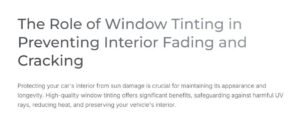
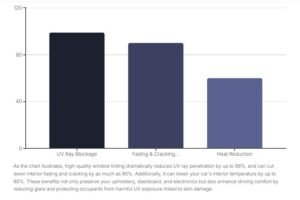
Source: Official California Detailing (2025), Truck Paradise (2025), Auto Image Wichita (2024)
Long Term Vehicle Interior Preservation
Window tinting serves as essential protection for preserving vehicle interiors against UV radiation and heat damage. Quality films create effective barriers that significantly extend interior component lifespan while providing comfort, privacy, and driving safety benefits. Understanding these protective mechanisms helps vehicle owners make informed decisions about comprehensive interior preservation through professional installation services.
Frequently Asked Questions
How much UV protection does window tinting actually provide compared to untreated glass?
High-quality window films can block up to 99% of harmful UV radiation, while standard automotive glass typically blocks only about 28% of total UV rays. This significant difference means tinted windows provide protection equivalent to SPF 1000+ sunscreen for your vehicle’s interior, dramatically reducing the rate of fading and material degradation.
Will window tinting affect the visibility or safety of driving my vehicle?
Quality window tint maintains excellent optical clarity while providing protection. Professional installations ensure proper visibility for safe driving, and many films actually improve visibility by reducing glare. However, it’s important to choose appropriate tint levels that comply with local regulations regarding visible light transmission for front windows.
How long does it take for UV damage to become noticeable in vehicle interiors?
UV damage begins immediately upon exposure, but visible signs typically appear within 3-6 months for highly vulnerable materials like fabric dyes and dashboard surfaces. Leather may show initial signs of drying and stiffness within a few months, while more durable materials might take 1-2 years to display obvious deterioration without protection.
Can window tint films interfere with electronic devices in my vehicle?
Modern ceramic window films do not interfere with electronic devices like GPS systems, cell phones, or satellite radio. Carbon and dyed films typically don’t cause interference either. Only older metalized films may cause some signal interference due to their metallic content, but these are less commonly used today.
What maintenance is required to keep window tint effective for interior protection?
Window tint requires minimal maintenance to remain effective. Clean tinted windows with ammonia-free products and soft cloths, avoiding abrasive materials. Wait at least one week after installation before washing to allow proper adhesive curing. With proper care, quality window films maintain their UV-blocking properties for 10-15 years or longer.
